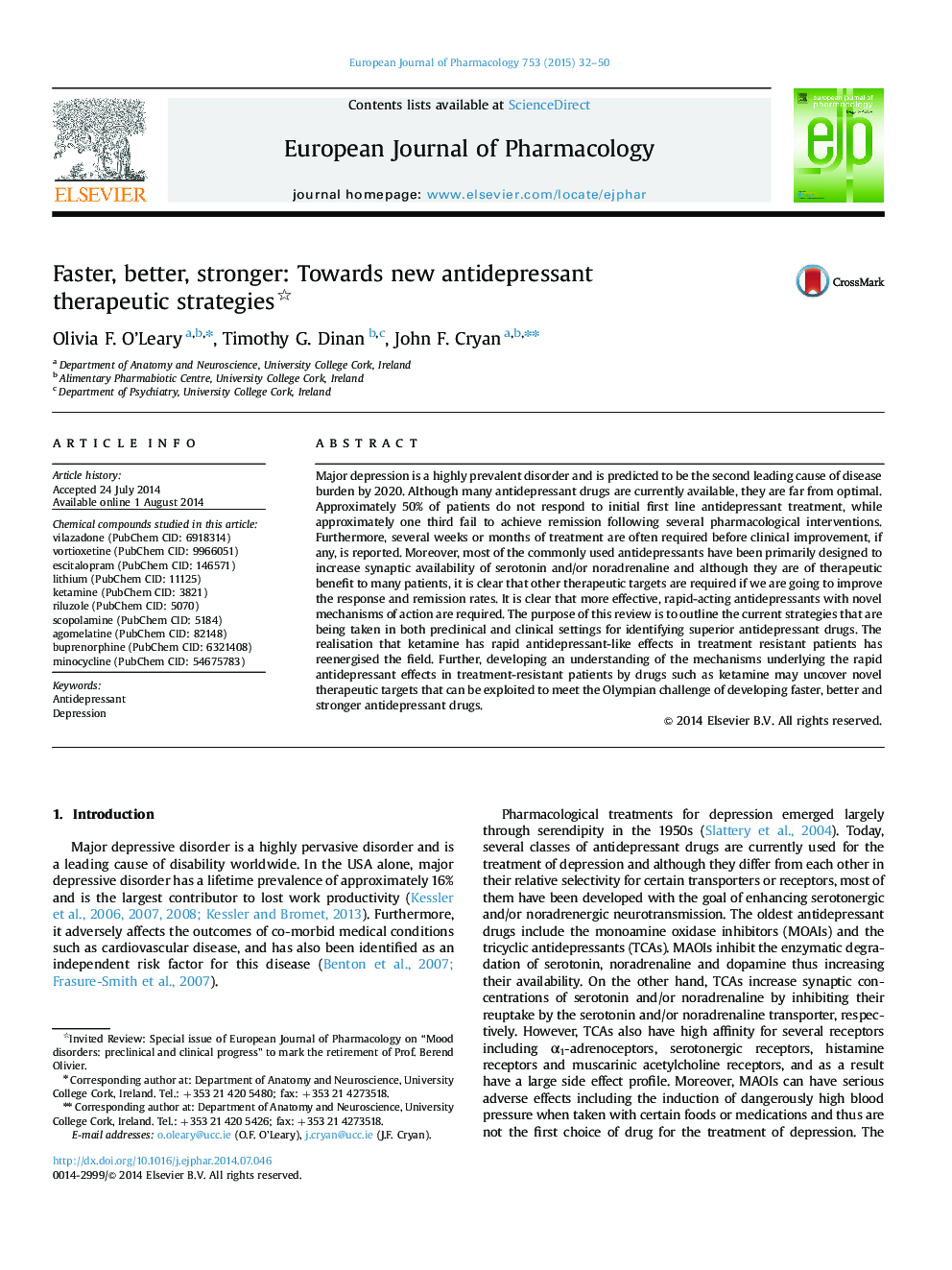| Article ID | Journal | Published Year | Pages | File Type |
|---|---|---|---|---|
| 5827456 | European Journal of Pharmacology | 2015 | 19 Pages |
Major depression is a highly prevalent disorder and is predicted to be the second leading cause of disease burden by 2020. Although many antidepressant drugs are currently available, they are far from optimal. Approximately 50% of patients do not respond to initial first line antidepressant treatment, while approximately one third fail to achieve remission following several pharmacological interventions. Furthermore, several weeks or months of treatment are often required before clinical improvement, if any, is reported. Moreover, most of the commonly used antidepressants have been primarily designed to increase synaptic availability of serotonin and/or noradrenaline and although they are of therapeutic benefit to many patients, it is clear that other therapeutic targets are required if we are going to improve the response and remission rates. It is clear that more effective, rapid-acting antidepressants with novel mechanisms of action are required. The purpose of this review is to outline the current strategies that are being taken in both preclinical and clinical settings for identifying superior antidepressant drugs. The realisation that ketamine has rapid antidepressant-like effects in treatment resistant patients has reenergised the field. Further, developing an understanding of the mechanisms underlying the rapid antidepressant effects in treatment-resistant patients by drugs such as ketamine may uncover novel therapeutic targets that can be exploited to meet the Olympian challenge of developing faster, better and stronger antidepressant drugs.
